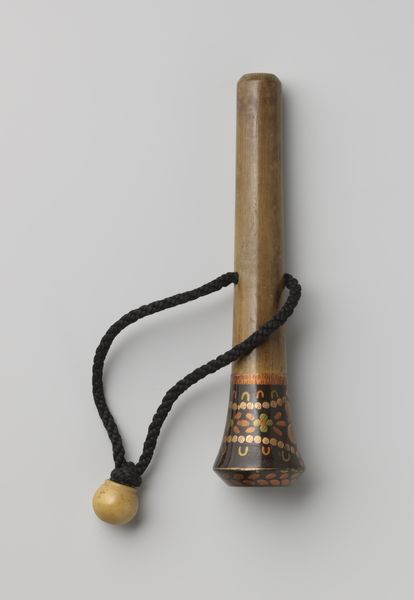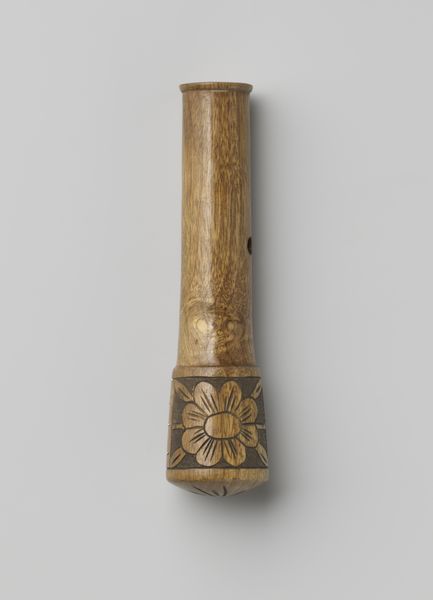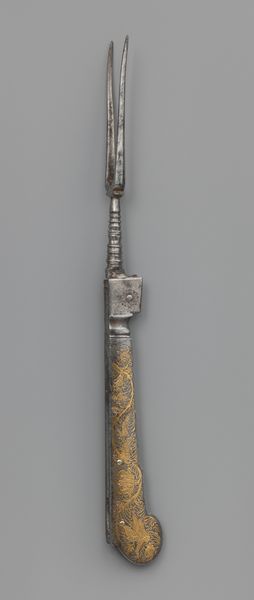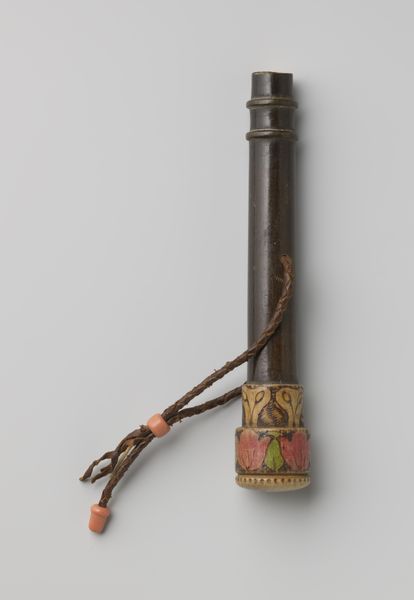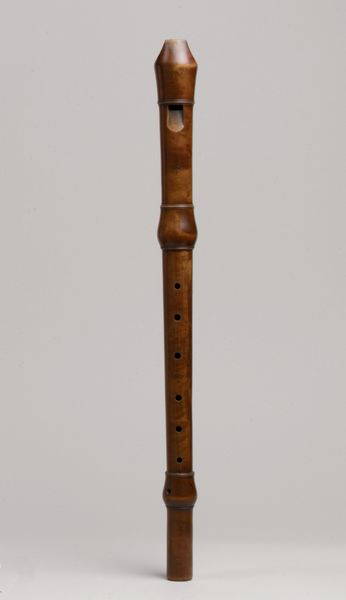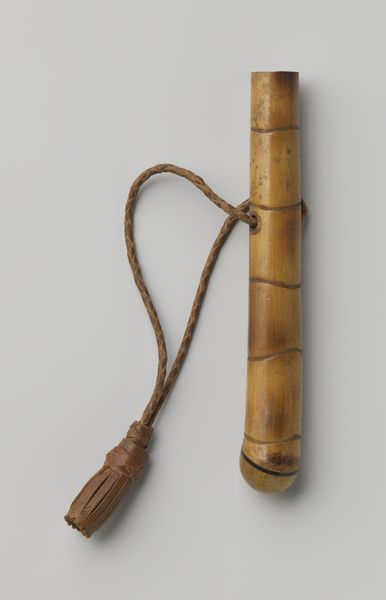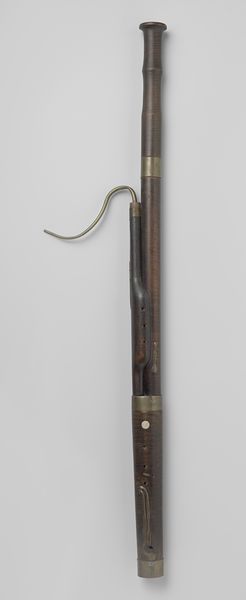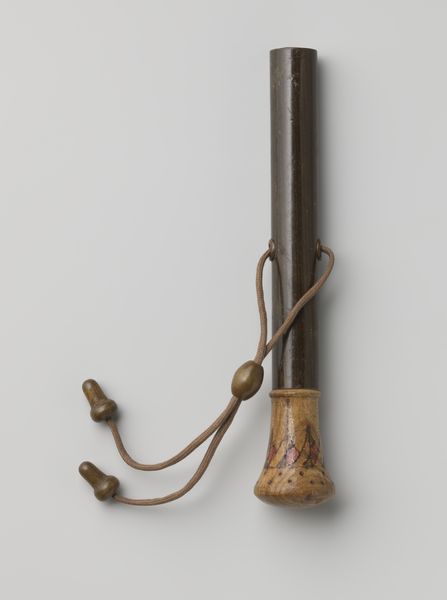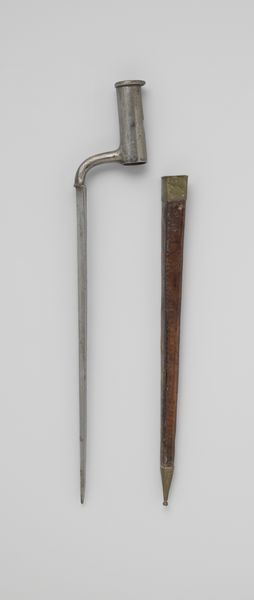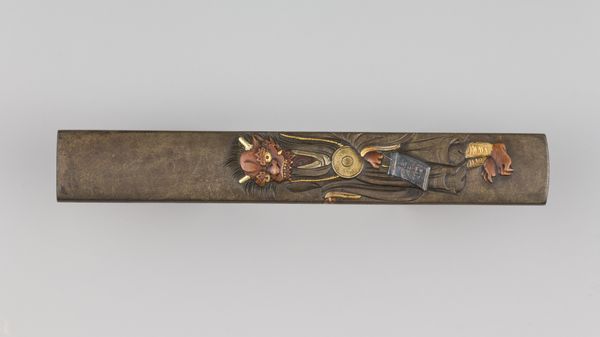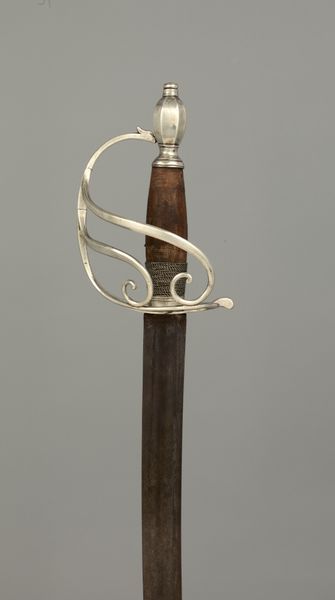
Parasolknop of parapluknop van geverfd hout, met waaiermotieven in rood, blauw en groen c. 1920
0:00
0:00
mixed-media, wood
#
mixed-media
#
wood
#
decorative-art
Dimensions: length 18.5 cm, diameter 4 cm
Copyright: Rijks Museum: Open Domain
Curator: This object, from around 1920, is a parasol knob, or parapluknop, of painted wood, featuring fan motifs in red, blue, and green. It's currently held in the Rijksmuseum. My initial impression is... curious. It has this kind of restrained yet playful sensibility. Almost like a secret weapon, or perhaps, a whimsical memento from a bygone era. Editor: Whimsical, definitely. My mind goes straight to the means of production. Consider the labor and materials involved: the carving and shaping of the wood, the grinding and mixing of pigments, and then the application in such a way that speaks to industrial replication coupled with hand painted motifs. What do we know about the maker, this Gustav Schnitzler? Were they working in a factory or a small artisan shop? Curator: Little is known about the maker himself unfortunately, but I see what you mean about this duality! It sits between the mass-produced and the lovingly handmade, an affordable but stylish accessory for the emerging middle class in that period I imagine. A democratic design? Editor: Exactly! The rise of leisure culture meant accessories like this weren’t just functional, but a marker of identity and class. The painted fan motifs are telling – decorative, accessible, speaking of a burgeoning visual language, especially after industrial revolution changed manufacturing process. Did the owner chose those fan motifs based on symbolic preference or just stylistic interest? Was there a wider catalogue from which customers made selections, essentially customising mass produced goods? Curator: Those tantalizing questions really highlight how objects like these can offer so much social insight! It is tempting to imagine some kind of intricate signaling language using those motifs, or at least a popular design of that time. Now that I look at it more carefully, I admire the execution and quality considering that accessibility and perhaps even mass production was one of its main goals! Editor: Absolutely! It raises complex ideas. The very existence of a decorated parasol knob reflects evolving cultural values. These small accessories tell vast stories. Curator: It also offers this tantalizing glimpse into individual taste in an era of increasing mass production, I guess. Editor: Indeed. Every little detail, every bit of material hints at deeper economic and societal structures and individual agency, I like that this rather unassuming object leads to these explorations.
Comments
No comments
Be the first to comment and join the conversation on the ultimate creative platform.
